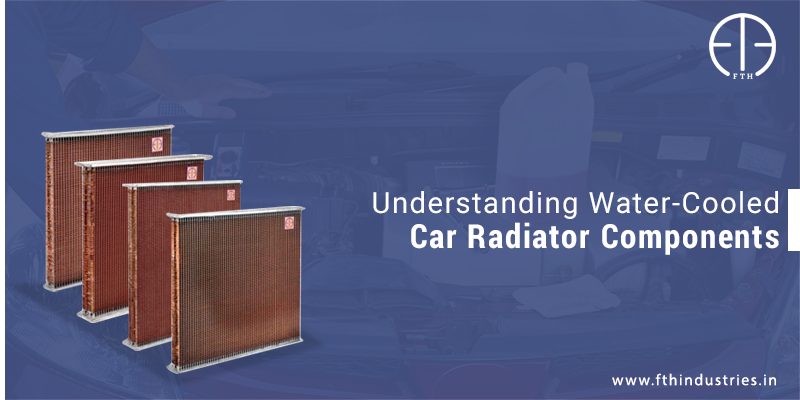
Understanding Water-Cooled Car Radiator Components

A car running continuously heats up and the rising temperature can be quite dangerous to the extent of resulting in an explosion. According to radiator manufacturers in Ahmedabad, it is essential to keep the temperature under check and cool to avoid a disaster. Car radiators are designed for the job of keeping the car temperature within safe limits. It is very important to keep the radiator and its components in good condition at all times. Since most of the car radiators are water-cooled, we will take a look at the vital components of a water-cooled radiator.
In a water-cooled engine the coolant is made of water in the water jacket around a cylinder. A radiator is placed between the water pump inlet and outlet for optimized performance. The entire route comprises of a radiator, water pump, radiator hose, cooling fan and thermostat. As automotive radiator manufacturers in India explain it, in a car radiator, it is not just the radiator that works, but the whole slew of components contribute.
Car Radiator Components at a Glance
Water Pump
The job of the water pump is to circulate coolant in the water jackets around the engine, radiator and sub-tank to make cooled coolant in the radiator runs back to the water jackets in a smooth manner.
Cooling Fan
When the vehicle is in motion, temperature of engine is reduceddue to fresh air, but it is not the case when the engine is on, but not in motion such as traffic jams. In such cases, the temperature is on the rise and a cooling fan comes handy. By increasing the air flow in front of the radiator, a cooling fan maintains the cooling efficiency to appropriate levels.
Thermostat
The function of the thermostat is to keep the coolant remain within the designated range of temperature. In conditions such as extremely cold weather, the thermostat stops the water flow to prevent coolants circulating in the radiator. As the engine temperature increases, its water temperature also increases. The thermostat then opens the water outlet entirely when the coolant’s temperature reaches above 80 degrees Celsius. It allows the coolant to circulate then.
Radiator Cap
There are times when the coolant’s temperature rises above 120 degrees Celsius. In the radiator cap are located a pressure valve and a vacuum valve. The pressure valve opens when the pressure shoots up due to the expansion of coolant liquid and moves an amount of coolant liquid into the radiator’s reservation tank.
The vacuum valve opens and returns the coolant liquid into the radiator when the pressure decreases.
If you have any questions about radiators or the best automotive radiator manufacturers in India, feel free to drop us a line.




